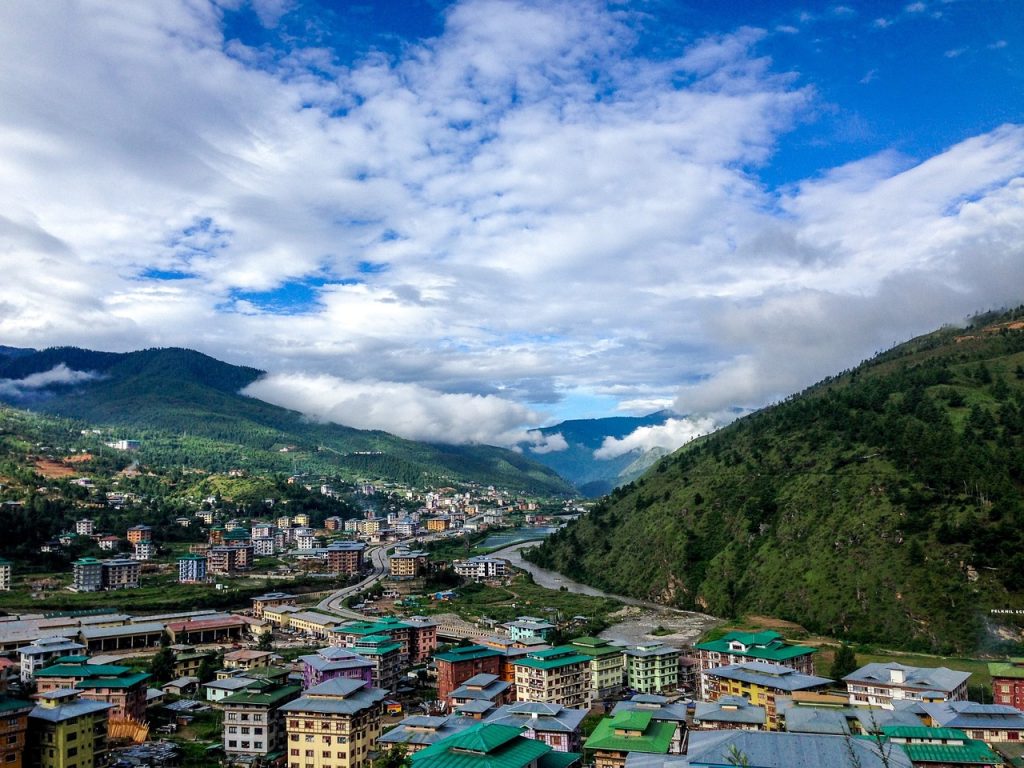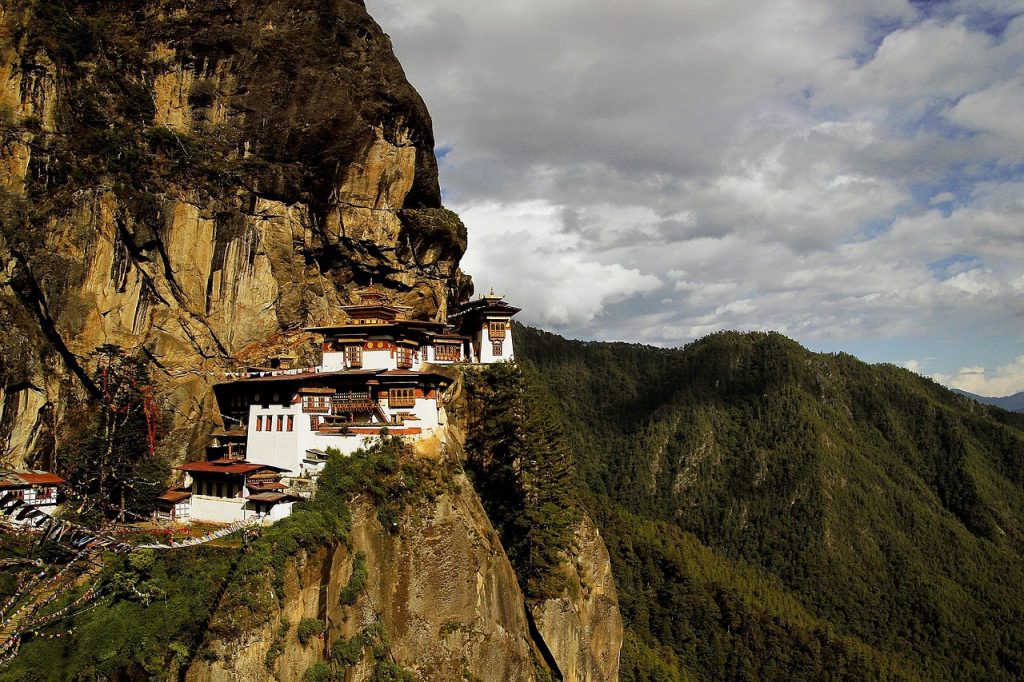Best Time to Go to Bhutan is one of the most important questions for anyone planning a trip to the Land of the Thunder Dragon. Bhutan offers stunning scenery, vibrant festivals, and a rich cultural legacy all year round. In this in-depth guide, we’ll explore the best time to go to Bhutan by breaking down seasonal highlights, activities, and weather conditions to help you choose the perfect time for your journey. Whether you seek peace, adventure, or clear Himalayan views, we’ve got you covered.
Why Timing Matters for Your Bhutan Trip
Every season in Bhutan offers a different experience because of its different climate, which ranges from subtropical lowlands to snow-capped Himalayan peaks. Your interests—trekking, festivals, wildlife, or avoiding crowds—will determine the ideal time of year to visit Bhutan. While summer and winter offer more calm travel with unique charms, spring and fall are the best times to visit because of their pleasant weather and lively festivals.Let’s dive into the seasons to find the best month to visit Bhutan for you.

Image by Sittichok Glomvinya from Pixabay
Best Time to Go to Bhutan: A Seasonal Breakdown by Season
Spring (March to May): Blooming Valleys and Clear Skies
- Weather: Mild temperatures (11–29°C in Paro and Thimphu), low humidity, and clear skies.
- Highlights:
- Vibrant rhododendron blooms (over 50 species) carpet hillsides, perfect for photographers.
- Ideal for trekking in regions like Gasa and the Druk Path.
- Major festivals like Paro Tshechu (March/April) showcase masked dances and cultural traditions.
- Pros:
- Stunning Himalayan views with minimal cloud cover.
- Perfect for outdoor activities like hiking and rafting.
- Cons:
- Peak season means crowded attractions and higher costs.
- Pre-booking accommodations and guides is essential.
- Top Tip: Visit in early March for fewer crowds and optimal weather.
Spring is a favorite for flower lovers and trekkers, with valleys bursting into color and trails offering stable conditions. The best month to go to Bhutan in spring is April for clear skies and festival experiences.
- “For flower lovers, the best time to go to Bhutan is spring when rhododendrons bloom.”
- “If you’re a trekker, the best time to go to Bhutan is during autumn for clear skies.”
- “Planning a quiet getaway? The best time to go to Bhutan might just be the winter months.”
Summer (June to August): Lush Landscapes and Fewer Crowds
- Weather: Warm (15–25°C in Paro and Thimphu), with frequent but short-lived monsoon showers.
- Highlights:
- Lush greenery and mist-covered mountains create a serene backdrop.
- Haa Summer Festival (July) celebrates nomadic culture with yak rides and local cuisine.
- Fewer tourists mean a more intimate experience at Bhutan tourism places like Punakha Dzong.
- Pros:
- Lower hotel rates and less crowded attractions.
- Ideal for cultural tours and spa retreats.
- Cons:
- Trekking trails can be muddy and slippery.
- Monsoon clouds may obscure mountain views.
- Top Tip: Pack waterproof gear and non-slip shoes for visits to Tiger’s Nest Monastery.
Summer is perfect for travelers seeking solitude and lush scenery. June offers a balance of moderate rain and vibrant landscapes, making it a great best month to visit Bhutan for budget-conscious explorers.

Image by Vikramjit Kakati from Pixabay
Autumn (September to November): Festivals and Crisp Weather
- Weather: Cool and crisp (10–25°C), with clear skies and minimal rainfall.
- Highlights:
- Major festivals like Thimphu Tshechu (September/October) and Jambay Lhakhang Drup (October) draw crowds with colorful dances.
- Ideal for high-altitude treks like the Snowman Trek.
- Black-necked cranes arrive in Phobjikha Valley (November) for a unique wildlife experience.
- Pros:
- Near-perfect weather for sightseeing and trekking.
- Golden rice fields add to the scenic beauty.
- Cons:
- Peak season (especially October) means high demand for hotels and flights.
- Book well in advance to secure spots.
- Top Tip: November offers fewer crowds and the Black-Necked Crane Festival.
Autumn, particularly October, is the best season to visit Bhutan for its stable weather and cultural vibrancy, making it the most popular time for international visitors.
Winter (December to February): Serene Beauty and Wildlife
- Weather: Cold (–6°C to 20°C), with clear skies and occasional snowfall in higher regions.
- Highlights:
- Phobjikha Valley hosts endangered black-necked cranes (late October to February).
- Druk Wangyel Tshechu (December) at Dochula Pass offers a unique military-led festival.
- Perfect for photography with snow-dusted landscapes and clear Himalayan views.
- Pros:
- Quiet trails and attractions with minimal tourists.
- Lower tariffs during the off-season.
- Cons:
- High-altitude trekking is challenging due to snow.
- Cold nights require warm clothing.
- Top Tip: Visit Punakha for milder temperatures and comfortable sightseeing.
Winter is ideal for those seeking tranquility and wildlife experiences. December is a great best month to go to Bhutan for clear skies and budget-friendly travel.
Key Factors to Consider When Choosing Your Travel Time
- Festivals: If cultural immersion is your goal, align your trip with major tshechus (religious festivals) in spring or autumn.
- Trekking: Spring and autumn offer the best conditions for treks like Jomolhari or Druk Path.
- Budget: Summer and winter provide lower rates and fewer crowds.
- Wildlife: Visit Phobjikha Valley in late autumn or winter to see black-necked cranes.
- Photography: Spring for wildflowers, autumn for golden landscapes, and winter for snowy vistas.
Must-Visit Bhutan Tourist Attractions by Season
| Season | Top Attractions | Why Visit |
| Spring | Paro Taktsang (Tiger’s Nest), Punakha Dzong | Rhododendron blooms and clear trails. |
| Summer | Haa Valley, Tashichho Dzong | Lush greenery and fewer crowds. |
| Autumn | Thimphu, Bumthang | Festivals and golden rice fields. |
| Winter | Phobjikha Valley, Dochula Pass | Black-necked cranes and snowy vistas. |
Unique Tips for Planning Your Bhutan Trip
- Sustainable Development Fee (SDF): All visitors (except from India, Bangladesh, and Maldives) pay a $100 daily SDF, which supports Bhutan’s conservation and healthcare efforts. Budget accordingly.
- Guides and Tours: A licensed guide is mandatory for travel beyond Thimphu and Paro. Book through certified operators listed on Bhutan Travel.
- Altitude Awareness: Acclimatize slowly to avoid altitude sickness, especially in high-altitude areas like Bumthang.
- Travel Insurance: Ensure coverage for medical evacuation, as facilities in remote areas are limited.
- Flight Delays: Flights to Paro are weather-dependent. Keep essentials in your carry-on for potential delays.
Thinking of traveling to the Land of the Thunder Dragon, Bhutan? It’s also an amazing choice for a romantic getaway. Check out our Good Honeymoon Destination Ideas for more inspiration on planning your perfect trip.
FAQs About the Best Time to Visit Bhutan
What is the best month to visit Bhutan for festivals?
October is the best month to visit Bhutan for festivals like Thimphu Tshechu and Paro Tshechu, offering vibrant cultural experiences and pleasant weather.
Is summer a good time to visit Bhutan?
Yes, summer (June to August) is great for fewer crowds and lush landscapes, but expect occasional rain. The Haa Summer Festival in July is a highlight.
Can I trek in Bhutan during winter?
Winter trekking is possible in lower valleys like Punakha, but high-altitude treks are challenging due to snow. Spring and autumn are better for trekking.
When can I see black-necked cranes in Bhutan?
Visit Phobjikha Valley between late October and early February to see these endangered birds, with November’s Black-Necked Crane Festival as a highlight.
How should I prepare for Bhutan’s weather?
Pack layers for spring and autumn, waterproof gear for summer, and warm clothing for winter. Non-slip shoes are essential for monsoon hikes.
Conclusion: Plan Your Perfect Bhutan Adventure
The best time to go to Bhutan depends on your priorities—vibrant festivals, scenic treks, or serene solitude. Spring (March–May) and autumn (September–November) are the most popular for their mild weather and cultural events, while summer (June–August) and winter (December–February) offer unique experiences with fewer crowds. No matter when you visit, Bhutan’s majestic landscapes and warm hospitality promise an unforgettable journey.
Ready to explore Bhutan’s iconic sites like Paro Taktsang or Punakha Dzong? Check out our guides on Top Bhutan Tourism Places and How to Plan Your Bhutan Trip for more inspiration. Start planning today

